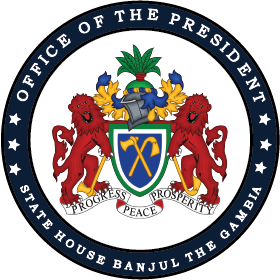SECTOR
Ministry of Agiculture, Livestock and Food Security
OBJECTIVE
The Gambia National Agricultural Investment Plan (GNAIP) aims to increase food and nutrition security at household level including for vulnerable households through increased ANR productivity based on sustainable use and management of natural resources in support of national goals of poverty reduction and improved livelihood.
CONTENT
The following constitute the six priority axes of the GNAIP II:
- Production and value chain promotion on food crops and vegetable sub-sector;
- Production and value chain promotion on livestock husbandry and pastoralist sub-sector;
- Production and value chain promotion on fishery and aquaculture sub-sector;
- Production and value chain promotion on forestry and environment sub-sector;
- Food and nutrition security, resilience, social protection; and,
- Promote good governance of the whole agriculture and natural resources sector.
GNAIP II is pivoted on four strategic axes and sub-axes:
- 1.0 Improving production and productivity of priority agro-forestry-pastoral and fisheries products
Sub axes:
I. 1.1: Food crop and vegetable productivity and expansion
II. 1.2: Enhancing livestock production and productivity
III. 1.3: Enhancing the sustainability of captured fisheries and expansion of aquaculture
IV. 1.4: Improving agro-forestry and bio-diversity
- 2.0 Structuring of the value chains
Sub axes:
I. 2.1 Enhancing processing and other value addition operations
II. 2.2 Enhancing market access, markets and quality control of products
III. 2.3 Value chain financing
IV. 2.4 Capacity building of value chain actors
- 3.0 Strengthening the resilience of vulnerable populations
Sub axes:
I. 3.1: Enhancing food and nutrition security of households and communities
II. 3.2: Build resilience of farmers and natural resources stakeholders to climate change
III. 3.3: Strengthening and expansion of social protection and social safety nets
- 4.0 Governance
Sub axes:
I. 4.1: Creating the enabling policy environment
II. 4.2: Institutional capacity building Institutional capacity building
III. 4.3: Human capacity building
IV. 4.4: Coordination
-
3.30 MB
Other
Published: 27/1/2022
-
Ministry of Public Service
7 documents -
Office of The Vice President
3 documents -
Ministry of Agriculture, Livestock and Food Security
8 documents -
Ministry of Basic and Secondary Education
2 documents -
Ministry of Defence
3 documents -
Ministry of Environment, Climate Change and Natural Resources
9 documents -
Ministry of Finance and Economic Affairs
11 documents -
Ministry of Foreign Affairs and International Cooperation
2 documents -
Ministry of Health
30 documents -
Ministry of Higher Education, Research, Science and Technology
3 documents -
Ministry of Communications and Digital Economy
24 documents -
Ministry of Interior
3 documents -
Ministry of Justice
1 document -
Ministry of Petroleum and Energy
5 documents -
Ministry of Trade Industry and Employment
8 documents -
Ministry of Transport Works and Infrastructure
3 documents -
Ministry of Tourism and Culture
3 documents -
Ministry of Women, Children and Social Welfare
12 documents -
Ministry of Youths and Sports
2 documents -
Ministry of Land and Regional Government
1 document -
Ministry of Fisheries and Water Resources
3 documents -
Office of The President
0 documents

